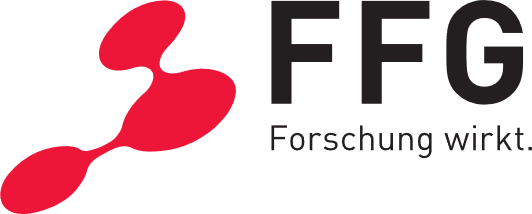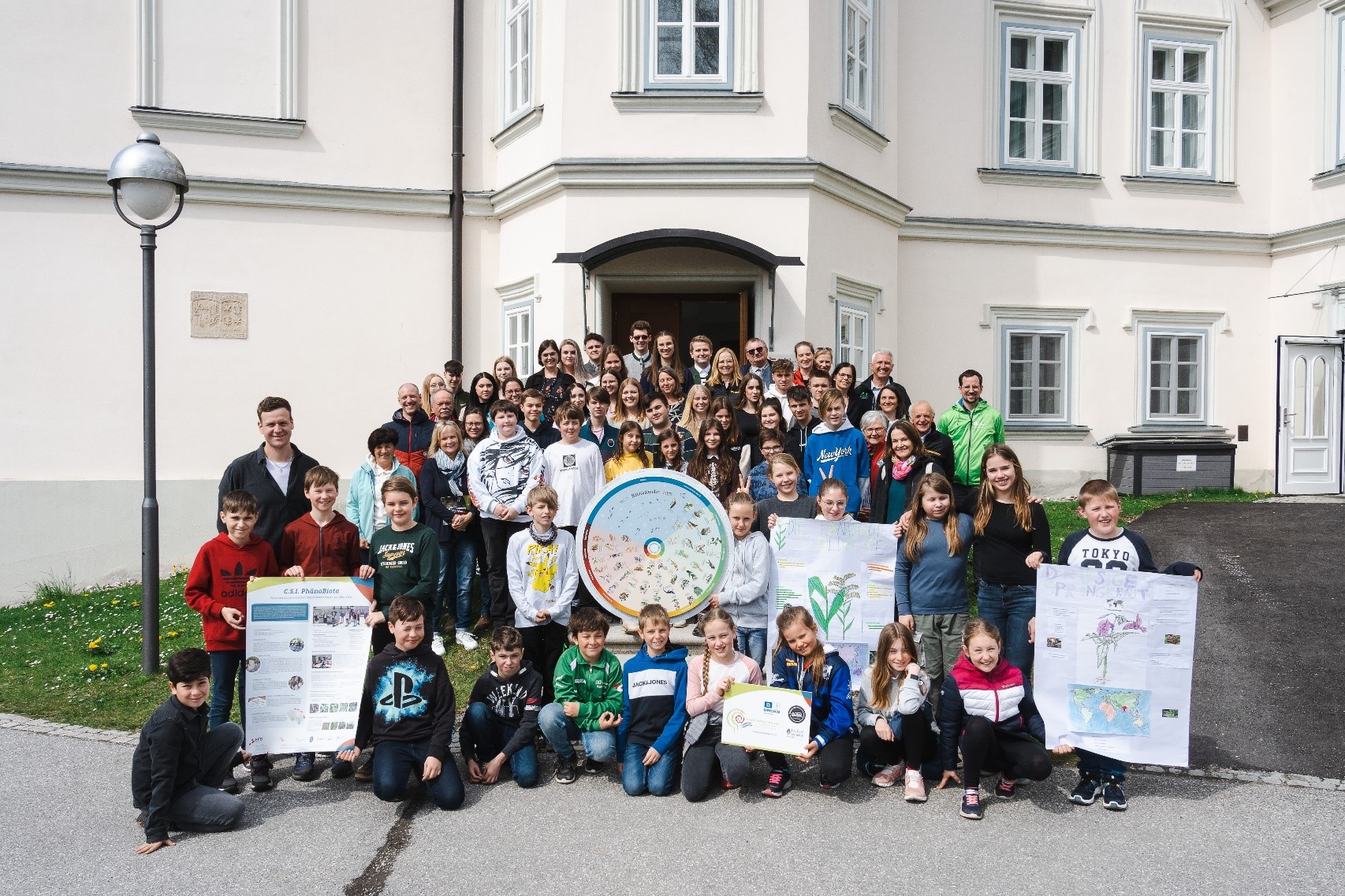education , CSI stands for Climate Science Investigation and means something like “ looking for clues and taking a close look at invasive neophytes over the course of the year .” The aim of researching plant newcomers is to find the best possible phenological point in time for one Find out the optimal removal method for non-native plant species that spread rapidly and uncontrollably.
To do this, the project team worked with the young people to investigate where the plants come from and how the plants “tick” (i.e. what are their strategies, what benefits and/or harm can they cause), how does the growth behavior match the weather and location and what strategies apply the plants so that they can spread successfully in nature.
On April 21, 2023, Johann Gasteiner, Direktor of the HBLFA Raumberg-Gumpenstein and Oliver Gulas, managing director of the Steirische Eisenwurzen Nature Park and lead partner of CSI PhänoBiota, opened the closing event.
The experts from the project partners Nature and Geopark Steirische Eisenwurzen, HBLFA Raumberg-Gumpenstein, GeoSphere Austria, Regional Management Liezen, Steiermärkische Berg- und Naturwacht and landscape planning consulting office LACON presented their results together with the children and young people as well as their teachers and Direktor of the project partner schools the interested audience.
The experts from the project partners Nature and Geopark Steirische Eisenwurzen, HBLFA Raumberg-Gumpenstein, GeoSphere Austria, Regional Management Liezen, Steiermärkische Berg- und Naturwacht and landscape planning consulting office LACON presented their results together with the children and young people as well as their teachers and Direktor of the project partner schools the interested audience.
Film contribution
A film “Making Aliens Visible” gives an overall impression of the extensive activities and institutions involved.
In addition to the core team, the Torrent and Avalanche Control Department, the Styrian Nature Conservation Association and the District Chamber of Farmers were also represented and made important contributions to the project and to the networking of education, research and practice.
The video greeting from the Aigen im Ennstal elementary school with their experiences in the project shows the great interest in the topic.
During the event, district captain Christian Sulzbacher impressively described the unpleasant experiences and great dangers that invasive neophytes can pose in the Liezen district, such as chemical burns caused by giant hogweed.
Project implementation
The project team developed instruments such as a teaching folder for educators , a subject of phenological phases (growth characteristics over the course of the year) with instructions for the appropriate removal of selected plant species for our region (Liezen district).
Students from the Educational Institute for Elementary Education (BAfFP Liezen) produced NawiTech boxes for kindergarten teachers .
Neophyte app
A smartphone app is used to enter neophyte observations (locations) and programming courses for all ages are offered.
The 10-season hedges could be planted in school gardens and finally at the HBLFA Raumberg-Gumpenstein, where phenological surveys have been carried out for over 30 years and the data is supplied to GeoSphere Austria (formerly ZAMG).
Goldenrod, glandular balsam, giant hogweed, ragweed (ragweed) and black locust were examined more closely.
As a research partner, the HBLFA Raumberg-Gumpenstein, under the direction of Renate Mayer, looked after a total of five schools with different focuses.
Students from the Aigen im Ennstal elementary school, the MS Irdning and the MS Stainach were comprehensively taught about the world of neophytes, researched and presented selected invasive neophyte species in group studies and observed the plants in nature with the growth behavior of their native counterparts, which have little chance, to withstand the pressure of competition. The young researchers examined the growth behavior of Japanese knotweed, goldenrod species and glandular balsam in closed containers; the documentation was carried out using their own survey forms.
The Admont high school visited the HBLFA Raumberg-Gumpenstein and conducted an experiment with plant parts of Canadian goldenrod and Japanese knotweed in so-called rhizoboxes and visited the climate research site with its experiments.
There was also great interest in the success rates of control measures carried out by the Raumberg students. Every year, different measures are implemented, especially in protected areas, to prevent the loss of native biodiversity.
Above all, human activities (conscious or unconscious) are the reason why the invasive neophytes spread so much and sometimes cause great damage. This begins with planting in your own garden as an ornamental plant, for grave decorations or as fodder (e.g. for bees). The green waste ends up on the edge of forests or water bodies. The seeds or root sections are transported further by excavated soil, water or wind and this is particularly noticeable along railway and road routes. New plant species are constantly appearing that cause problems and displace native species, trigger allergies or cause great damage to agriculture. Global warming promotes these phenomena. Renate Mayer, neophyte expert at the HBLFA Raumberg-Gumpenstein, moderated a radio show on Radio FreeQuenns on the topic in September 2022. There is still a lot of room for improvement in research into methods!
There is the EU Regulation (EU) No. 1143/2014 on the prevention and management of the introduction and spread of invasive alien species, which came into force on January 1, 2015 and is directly applicable in Austria. However, there are still no comprehensive, specific instructions for action depending on the plant species and obligations for preventive measures, observation of the spread and removal measures.
This makes it all the more important to get children and young people excited about the cause. In the future, the neophyte app can make an important contribution to identifying sources of spread so that appropriate measures can be taken to eliminate them immediately. Because the gigantic, unnoticed growth and the great distribution success, including monocultures of Japanese knotweed, glandular balsam, large and Canadian goldenrod or giant hogweed (to name just a few plant species that directly affected us in the CSI PhenoBiota project) is at a later stage hardly manageable anymore.
It is very impressive how much effort the students put into experimenting on complex scientific topics such as invasive neophytes and how they can delve deeper into the subject, regardless of age. They also use all their strength to take measures to eliminate it.
We must use this potential of young people to participate in research and promote it accordingly. The project sets an example for the cooperation of all institutions in order to implement effective measures.
The project partners
Steirische Eisenwurzen Nature and Geopark (project management, Martin Gebeshuber), GeoSphere Austria, HBLFA Raumberg-Gumpenstein (Renate Mayer), Steiermärkische Berg- und Naturwacht, Liezen regional management, LACON.



The regional talent project CSI PhänoBiota is supported by the Ministry of Climate Protection and the FFG .
Poster with the results
Image author: © L. Kniewasser/NUP Steirische Eisenwurzen
Similar projects
2477: Monitor_Neophytes
Growth behavior, evaluation of control measures and monitoring of selected invasive alien plant species
2020 - 2023, Mayer Renate
3664: WT Fallopia
Knotweed
2018 - 2019, Bohner Andreas
3705: WT Games of Clones II
Research into the growth behavior, spread and control methods of Japanese knotweed (Fallopia japonica)
2019 - 2021, Mayer Renate























